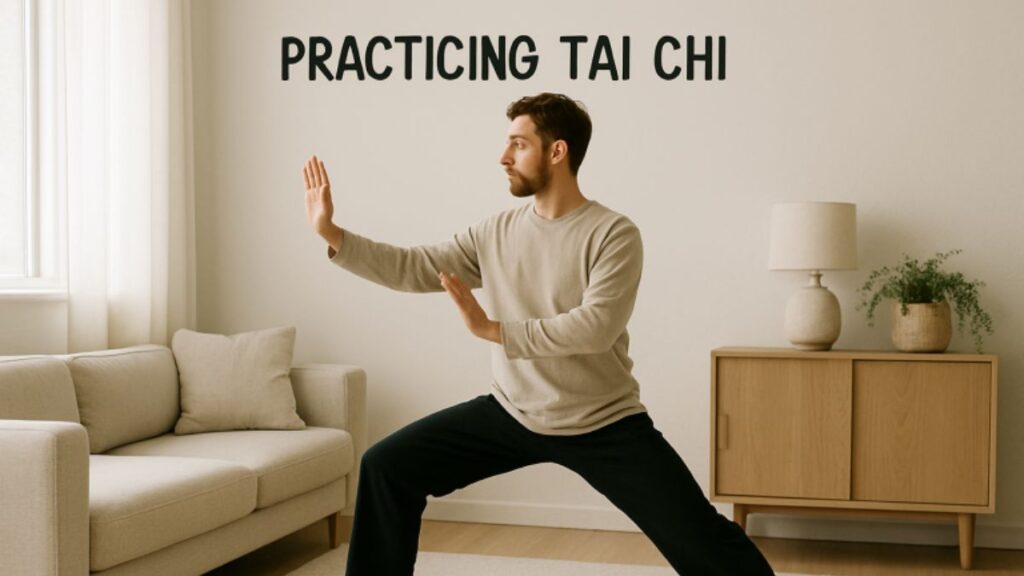Introduction to Tai Chi and Qigong
Tai Chi and Qigong are ancient Chinese disciplines deeply rooted in philosophy and health. Tai Chi emerged centuries ago as a martial art, gradually evolving into a fluid, low-impact exercise system. Movements are slow, deliberate, and coordinated with deep, rhythmic breathing. Qigong, meanwhile, centers on harnessing the body’s vital energy (“qi”) through postures, breath, and mindful intention. Though different in origin, both systems merge gentle exercise with meditation, offering holistic benefits for body and mind. In today’s fast-paced world, self-care often takes a backseat, making it easy to neglect essential health and wellness routines. One of the most effective and accessible ways to support holistic well-being is by embracing time-tested practices like Tai Chi and Qigong at home. These gentle movement arts are suitable for all fitness levels and offer a calm, mindful approach to exercise. Virtual Tai Chi classes for beginners provide a convenient and supportive entry point, allowing you to build confidence and learn at your own pace.
Harvard Health’s guide to Tai Chi is also helpful for understanding the fundamentals and staying motivated. Integrating Tai Chi and Qigong into your daily schedule can bring many physical and mental benefits. The flexibility of home practice, especially with credible online guidance, makes these ancient traditions a practical choice for people of all ages and busy lifestyles. Whether you’re interested in better mobility, stress relief, or just a few peaceful minutes to yourself, discovering Tai Chi and Qigong can be life-changing. Below, we’ll explore the key advantages, scientific evidence, and practical advice to help you experience these ancient arts at home.
Physical Health Benefits
Consistent Tai Chi and Qigong practice can transform your physical health over time. Studies show that these practices promote optimal cardiovascular health, bolster the immune system, and improve balance, which is crucial for older adults hoping to prevent falls. Enhanced range of motion and flexibility support better posture and joint health, while the moderate intensity makes these forms suitable for rehabilitation and chronic pain management. Notably, Tai Chi has been embraced as a safe, effective movement therapy for heart attack survivors and those recovering from illness, easing their transition to higher activity levels. Here’s How Practicing Tai Chi Can Help the Heart
Mental Health Improvements
The benefits of Tai Chi and Qigong extend to mental and emotional well-being. The mindful, meditative aspects foster a calming, focused state that counteracts daily stress and anxiety. Research has linked these practices to reduced symptoms of depression and improved overall mood, supporting cognitive sharpness and resilience against mental fatigue. For people with chronic pain conditions like fibromyalgia, Tai Chi offers relief not just physically but also helps alleviate psychological distress. Why Tai Chi Works So Well For Pain Relief
Accessibility and Convenience
One of Tai Chi and Qigong’s greatest strengths is their inclusiveness. These disciplines require no expensive equipment or gym membership. All that’s needed is a clear space and comfortable clothing. Home practice removes barriers such as travel time, weather, and rigid class schedules, allowing anyone to fit sessions into even the busiest day. The adaptability of these exercises means they can be gently modified to accommodate mobility issues, chronic conditions, or different energy levels, making them a realistic long-term wellness solution for nearly everyone.
Getting Started at Home
Beginning a home practice of Tai Chi or Qigong is accessible and straightforward. Start by identifying a quiet, tidy space where you won’t be interrupted. Consider using free video tutorials or enrolling in reputable online programs, which provide structured instruction and progression. Initial sessions can be brief—5 to 10 minutes is ample for beginners. As your familiarity and confidence grow, gradually extend your practice and explore new movements and routines. This approach allows you to build a consistent habit that integrates seamlessly into your lifestyle.
Tips for Effective Practice
Consistency is Key
Set a simple, regular schedule for your sessions, focusing on daily or every-other-day practice where possible. Short, frequent practices yield greater benefit over time than sporadic, lengthy sessions.
Practice Mindfully
Concentrate on synchronizing each movement with your breath. This deepens the meditative aspect and enhances your awareness of bodily sensations, promoting relaxation and mental clarity.
Listen to Your Body
Modify postures or ease off movement if you feel discomfort or fatigue. The goal is to nurture your body, not to push through pain or exhaustion.
Seek Instruction and Support
Consider using live or on-demand platforms for expert guidance and community connection as you advance. Feedback from a knowledgeable instructor helps refine your form and ensures steady improvement.
Conclusion
Practicing Tai Chi and Qigong at home empowers you to take charge of both your physical and mental health in a sustainable and enjoyable way. These traditions are accessible to nearly everyone and are adaptable to individual needs, providing a foundation for lifelong wellness and mindfulness. Dedicating even a modest amount of time to these centuries-old practices can lead to transformative benefits for your mind, body, and overall quality of life from the comfort of your living space.







